 |
|
 |
| |
發行人:吳育任所長 編輯委員:曾雪峰教授 主編:林筱文 發行日期:2022.08.30 |
| |
|
 |
30 GHz Highly Damped Oxide Confined Vertical-Cavity Surface-Emitting Laser
Professor Chao-Hsin Wu
Graduate Institute of Photonics and
Optoelectronics, National Taiwan University
臺灣大學光電所 吳肇欣教授
Oxide-confined 850-nm vertical-cavity surface-emitting lasers (VCSELs) are reliable light sources for short-reach multi-mode optical communication applications due to their high efficiency, ease of fabrication, reliability, and small foot-print. 850 nm VCSELs with non-return-to-zero (NRZ) and 4-level pulse amplitude modulation (PAM-4) modulation have provided backbone optical interconnects for 400 and 800 Gigabit Ethernet networking technologies. The dramatically increasing data demand drives the VCSEL-based multi-mode fiber (MMF) links to equip advanced modulation schemes such as PAM-4, which puts specific emphasis on the dynamics performance of VCSELs, such as high bandwidth at low current, sharp edge in S21 response, and low intrinsic noise. Various methods have been investigated to reduce the device parasitics, increase modulation bandwidth and yield highly damped modulation responses.
Our device employs six-pairs thick oxide aperture for a reduced device parasitics capacitance and an optimized relaxation oscillation damping with currents for high quality eyes at the targeted data rates. The highly-damped VCSEL exhibits a low thermal impedance, ultra-high bandwidth, and delivers a flat modulation response. The L-I-V curve of our high damped VCSEL with 3.5 μm oxide aperture at room temperature (RT) and 75°C is shown in Fig. 1. The VCSEL exhibit a peak optical power of 3.88 mW and roll-over current over 9 mA. Fig. 2 shows the measured modulation responses and the VCSEL exhibits flat modulation responses at various biases at RT and 75°C. When biased at 5 mA, the VCSEL reached 27.3 GHz and 25.2 GHz at RT and 75°C respectively, and showed a mere 2.1 GHz decrease in modulation bandwidth at the elevated temperature. The fitted MCEF is 12.2 GHz / mA1/2 and is illustrated in Fig. 3. We have demonstrated an ultra-fast highly damped VCSEL with a flat modulation response for up to 30 GHz. We employed several optimizations in the design of the VCSEL, including the intrinsic dynamic performance, RC parasitics, and photon lifetime tuning, which enable a thermally-stable operation for up to 75°C. The flat modulation characteristics of the VCSEL could enable over 100 Gb/s line rates PAM-4 modulation for 400G and 800G high-capacity optical interconnect systems.
|

|
|
Fig. 1. The L-I-V characteristics for a ~3.5 μm oxide aperture diameter at RT and 75°C. |
|
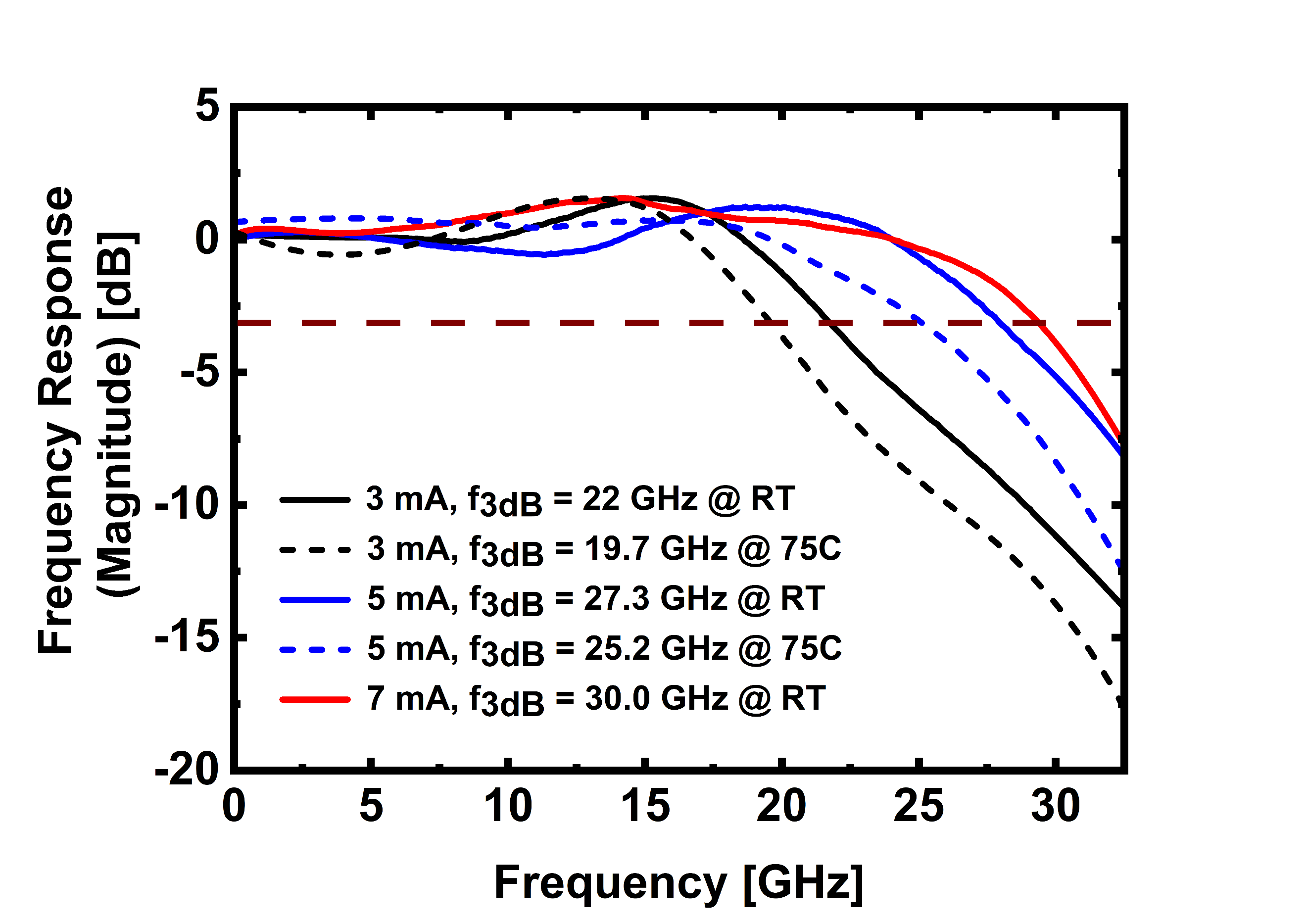 |
|
Fig. 2. The S21 optical response when 3 mA, 5 mA, and 7 mA at RT and 75°C. |
|
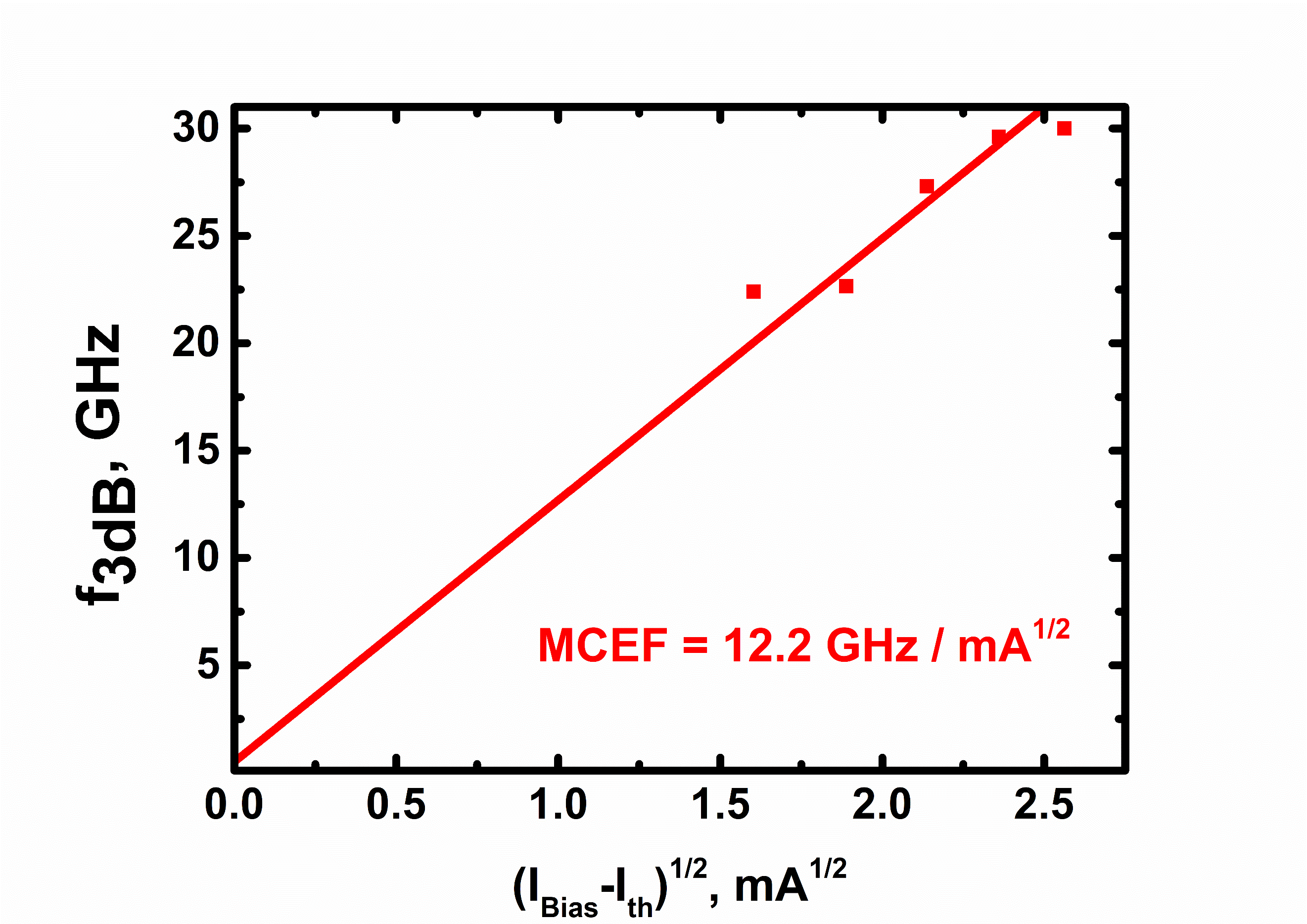
|
|
Fig. 3.
3 dB bandwidth plotted against square root of biased current and MCEF fits. |
Step-shaped electrode for Blue Phase transflective liquid crystal displays
Professor Wing-Kit Choi
Graduate Institute of Photonics and
Optoelectronics, National Taiwan University
臺灣大學光電所 蔡永傑教授
In recent years, our laboratory has been proposing new electrode designs for blue phase liquid crystal displays (LCDs) with high light efficiency and low operation voltage. One such design is shown in figure 1 below for a transflective LCD. We named this design “step-shaped electrode”. By using this design, it is possible to produce a blue-phase transflective LCD with very high light efficiency of > ~ 95% at low operation voltage of ~ 9 to 13V with well-matched T-V and R-V electro-optic curves as shown in figure 2. This design is based on the concept of forming fairly strong and uniform horizontal electric fields above the reflective (R) region which has a step-shaped reflective electrode and also above transmissive (T) region which is enhanced by the vertical wall-like electrode. These strong electric fields help minimize the dead-zones which normally exist above electrodes (as illustrated in figure 3) and hence enhance the transmission/reflection and lower the operation voltage.
|

|
|
Figure 1.
Structure of a blue-phase transflective LCD with step-shaped electrodes |
|
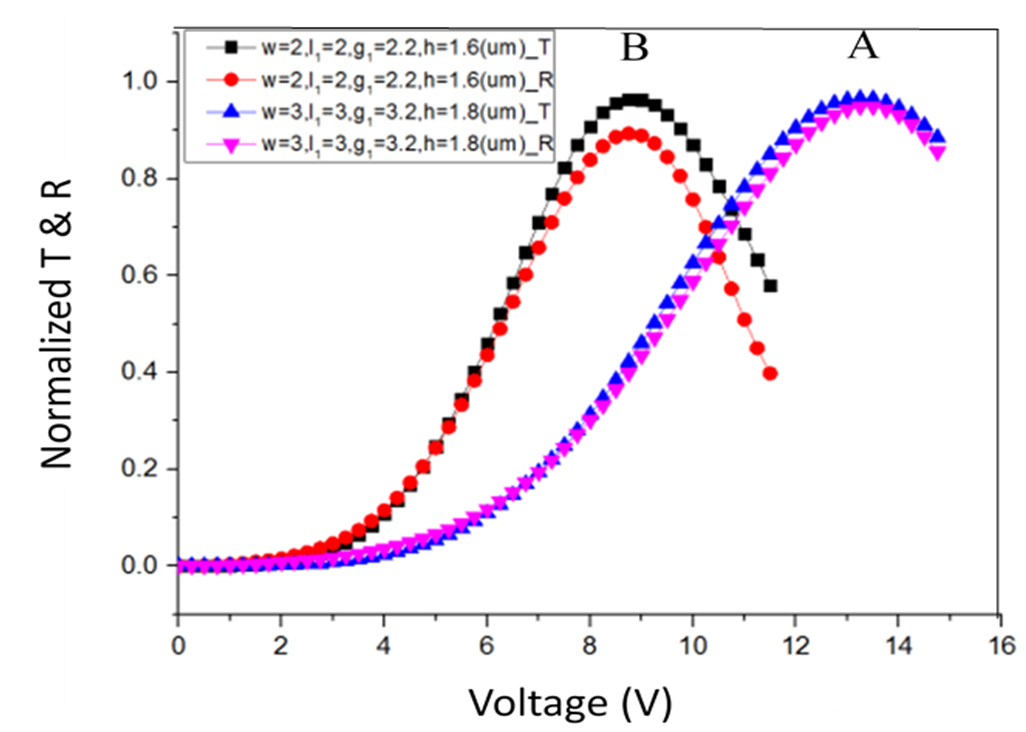
|
|
Figure 2. Normalized transmission (T) and reflection (R) of step-shaped electrode blue-phase transflective
LCD with
two
matched
designs
A and B |
|

|
|
Figure
3. Top-view transmission (T) and reflection (R) profiles of a step-shaped electrode blue-phase transflective
LCD
showing
almost
no dead
zone
exist
above
electrodes |
|
 |
| |
|
|
|
 |
|
| |
|
 |
—
資料提供:影像顯示科技知識平台 (DTKP, Display Technology
Knowledge Platform) —
—
整理:林晃巖教授、吳思潔 —
快車道上的光
在超快時間尺度上對光子脈衝的成形,使光與原子和電子運動之間受控的交互作用成為可能。目前文獻上已經建立了許多方法來進行具有皮秒(picosecond),甚至飛秒(femtosecond)解析度的超快雷射脈衝的相位和/或振幅工程。
例如:傅立葉合成技術可用於對脈衝進行成形,就像利用頻率梳的方法一樣。任意波形也可以透過光的色散、適當調制部分光譜並將光重新組合成工程化波形。雖然這種方法在可能的波形方面非常靈活,但任意性取決於色散器的光譜解析度和總光譜帶寬,如圖1。
|
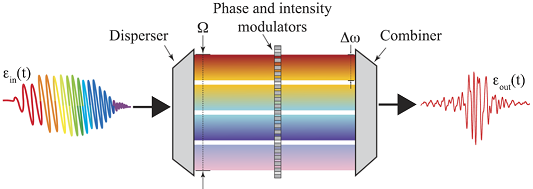
|
|
圖1、波形合成的概念 |
現在,在美國和德國工作的團隊,Husain Alqattan、Dandan Hui、Vladimir Pervak 和 Mohammed Hassan已經克服了之前的挑戰,並展示了跨越兩個八度音階的超連續譜的光場合成(APL Photon.
7, 041301; 2022)。這一發展將合成能力擴展到深紫外光譜區域。這些發現能夠合成具有阿秒(attosecond)解析度的光形,這對亞飛秒(sub-femtosecond)電子運動控制具有重要意義。
|

|
|
圖2、阿秒光場合成器(Attosecond Light Field Synthesizer, ALFS)的展示圖 |
在解釋這項工作的最初動機時,通訊作者Mohammed Hassan告訴Nature Photonics,他們的目標是在實際時間和空間中電子運動的成像和控制。而且,由於可以透過驅動器光場的依需求成形來實現電子運動的控制,因此他們有動力創建阿秒光場合成器(Attosecond Light Field Synthesizer, ALFS)的工具,如圖2。第二個目標是希望使用阿秒(attosecond)光脈衝來釋放超快自由電子,以產生阿秒電子脈衝,並啟用先前提出的阿秒電子顯微鏡,該顯微鏡可用於實現時間和空間成像電子運動。
Hassan向Nature Photonics解釋道:「最有挑戰性的是找到一種簡單且直接的方法來對ALFS的合成波形進行採樣,確實,有一些成熟的方法,例如阿秒條紋,但它們的要求很高。我們能夠利用遵循驅動場的介電系統的反射率調制來克服這一挑戰,並將超快科學界引入全光場採樣方法。這種直接且簡單的光場採樣方法使我們能夠為阿秒光場合成依需求建立方案。」如圖3。
|
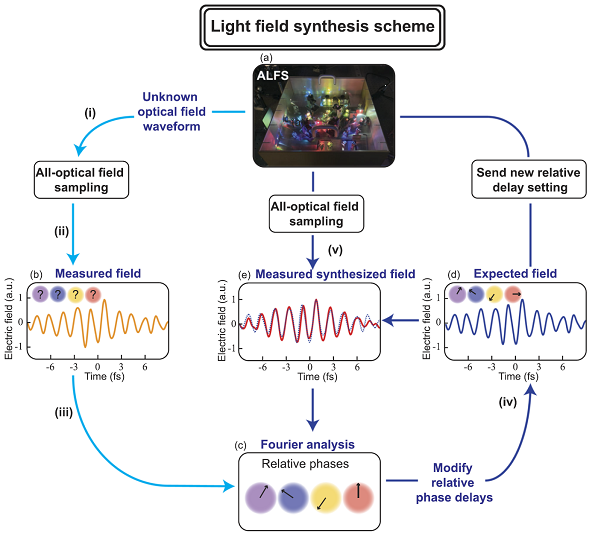
|
|
圖3、依需求光波成形架構 |
該團隊計劃透過展示阿秒光學開關和對超快雷射脈衝進行拍赫茲(petahertz)數據編碼的能力,將他們的工作提升到一個新的層次。
|
參考資料: |
David F. P. Pile, “Light in the fast lane, ”
Nature Photonics 16, pages 409
(2022)
https://doi.org/ 10.1038/s41566-022-01017-8
DOI: 10.1038/s41566-022-01017-8
|
|
參考文獻: |
Husain Alqattan, Dandan Hui, Vladimir Pervak, and Mohammed Th. Hassan, “Attosecond light field synthesis,”
APL Photon. 7, 041301
(2022)
DOI: 10.1063/5.0082958
|
|
|
|
|
|
 |
|
|
|
|
|
|
|
|
|
|
|
 |
|
|
|
 |
|
 |
|